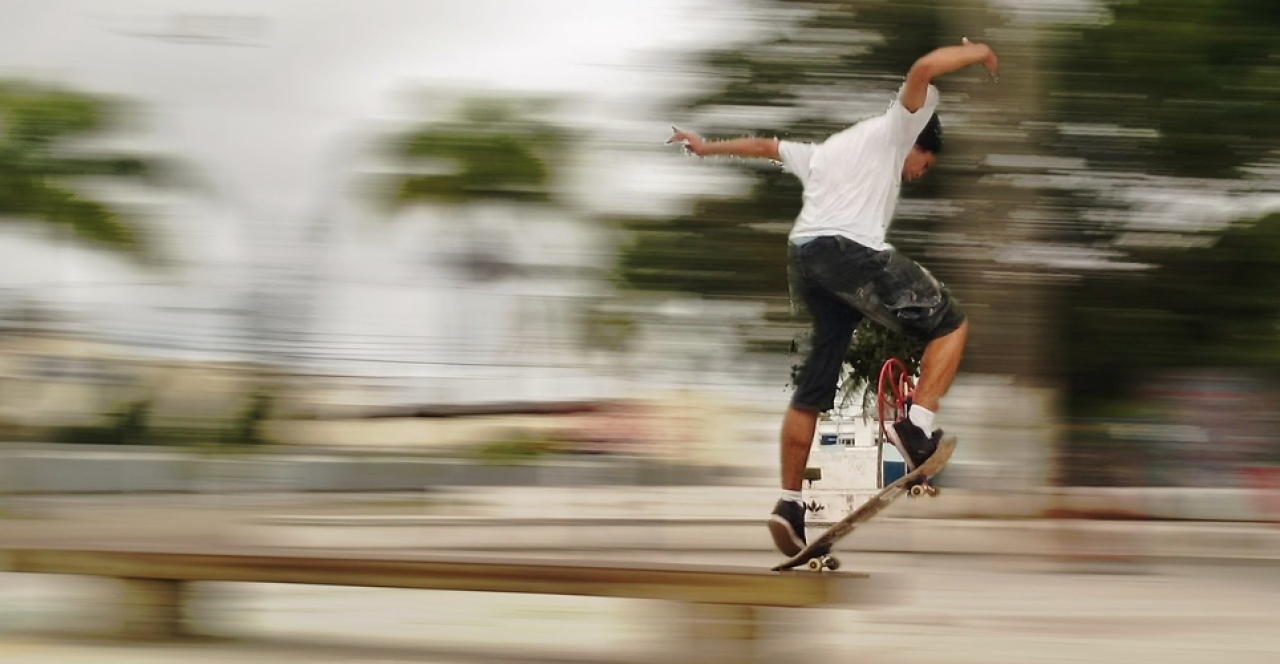Redefining the Purpose of Public Spaces
The challenge of engaging adolescents in public life begins with understanding their world. Adolescents are at a crossroads, seeking independence while navigating the pressures of school, family, and peers. They need spaces that allow them to connect, explore, and simply be. Traditional public spaces often fall short, offering either overly controlled environments or uninviting, neglected areas.
The Re-Gen cities recognized this gap and set out to create something different: public spaces that feel owned by the youth themselves. Whether it’s a skateboarder perfecting tricks on a newly built ramp or a group of friends shooting hoops in revitalized squares, these spaces are designed to invite participation and foster community.
Stories of Transformation: Testing Actions in Re-Gen Cities
In Albacete, Spain, digital tools were key to connecting with youth. An Instagram campaign encouraged teenagers to map their city, highlighting underused spaces and proposing improvements, particularly in sports and recreation. The initiative engaged teens through visual storytelling, inspiring ideas for skate parks, basketball courts, and community spaces. This digital approach provided city planners with actionable insights to shape public spaces aligned with adolescent aspirations. The digital format allowed broad participation and revealed a strong interest in enhancing outdoor recreational areas.
Daugavpils, Latvia, focused on physical events to activate public spaces. sports festivals combined street sports and cultural activities in neglected neighborhoods. Events like the Youth Summer Festival fostered social interaction and encouraged young people to actively engage with their urban environment. Youth-led festivals transformed neglected neighborhoods into lively hubs. Combining street sports like basketball and football with music and interactive workshops, the festivals brought together diverse groups of adolescents, fostering a strong sense of community ownership.
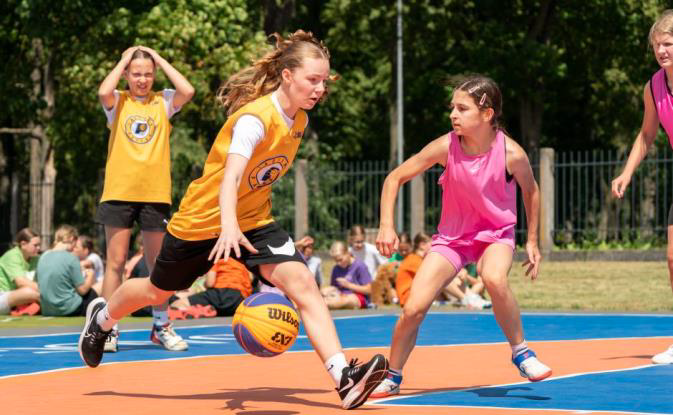
In Dobrich, Bulgaria, the transformation of an abandoned sports ground into "The Green Apple Park" exemplified the fusion of sports and environmental consciousness. This multifunctional space blends sports, environmental education, and community events. The Apple Sport Festival was a highlight, drawing large crowds and reinforcing the park’s role as a community hubThrough events like the Apple Sport Festival, the site became a community focal point for sports and sustainability, offering spaces for street basketball alongside urban gardening and eco-education.
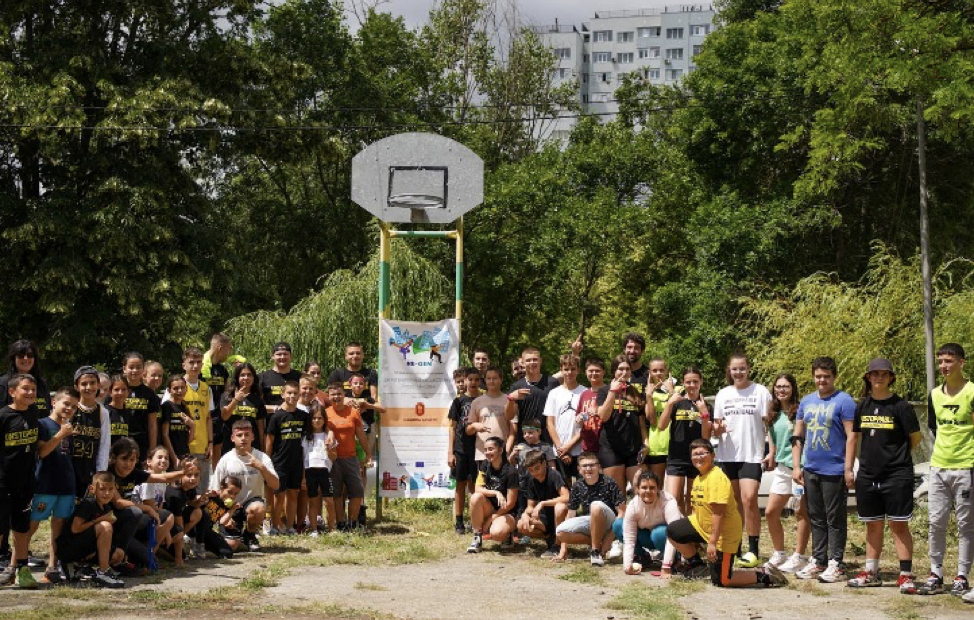
Pula, Croatia, is redefining community engagement through the revitalization of the Rojc Community Center and Valica sports playground, placing youth at the heart of urban transformation. The "Rojc Walk" offered an inspiring glimpse into the center’s historical significance and its future as a cultural hub. Students will explored plans for its revitalization before unleashing their creativity to design activities they would like to see in the renewed space, envisioning Rojc as a vibrant nexus for culture, art, and social connection.
At Valica playground, creativity merged with community connection in a participatory art project that invited pupils to reimagine the space. Together, they will paint vibrant designs on the playground’s walls, blending personal expression with collective identity. This transformation will not only turned the playground into a visually striking, welcoming environment but also deepened the bond between the youth and their urban surroundings.
These initiatives showcase Pula’s forward-thinking approach to urban development, fostering creativity, inclusion, and a sense of ownership among its young residents. By empowering youth to leave their mark on their city, Pula is shaping public spaces that inspire, connect, and endure.
Verona, Italy, explored new possibilities for its underutilized southern neighborhoods by planning to convert them into “contemporary open arenas.” These spaces will blend basketball courts, skateboarding, and parkour with community events. Adolescents are engaged in co-creation labs, urban walks, and hackathons to ensure the regeneration reflects their vision. These initiatives engaged teens in transforming underutilized spaces into vibrant sports hubs.
In Milano, Italy, the co-design process in the San Siro district empowered teens to plan a community event combining sports, music, and culture. This collaboration between adolescents and urban planners highlighted how participatory processes could lead to spaces that resonate deeply with youth.
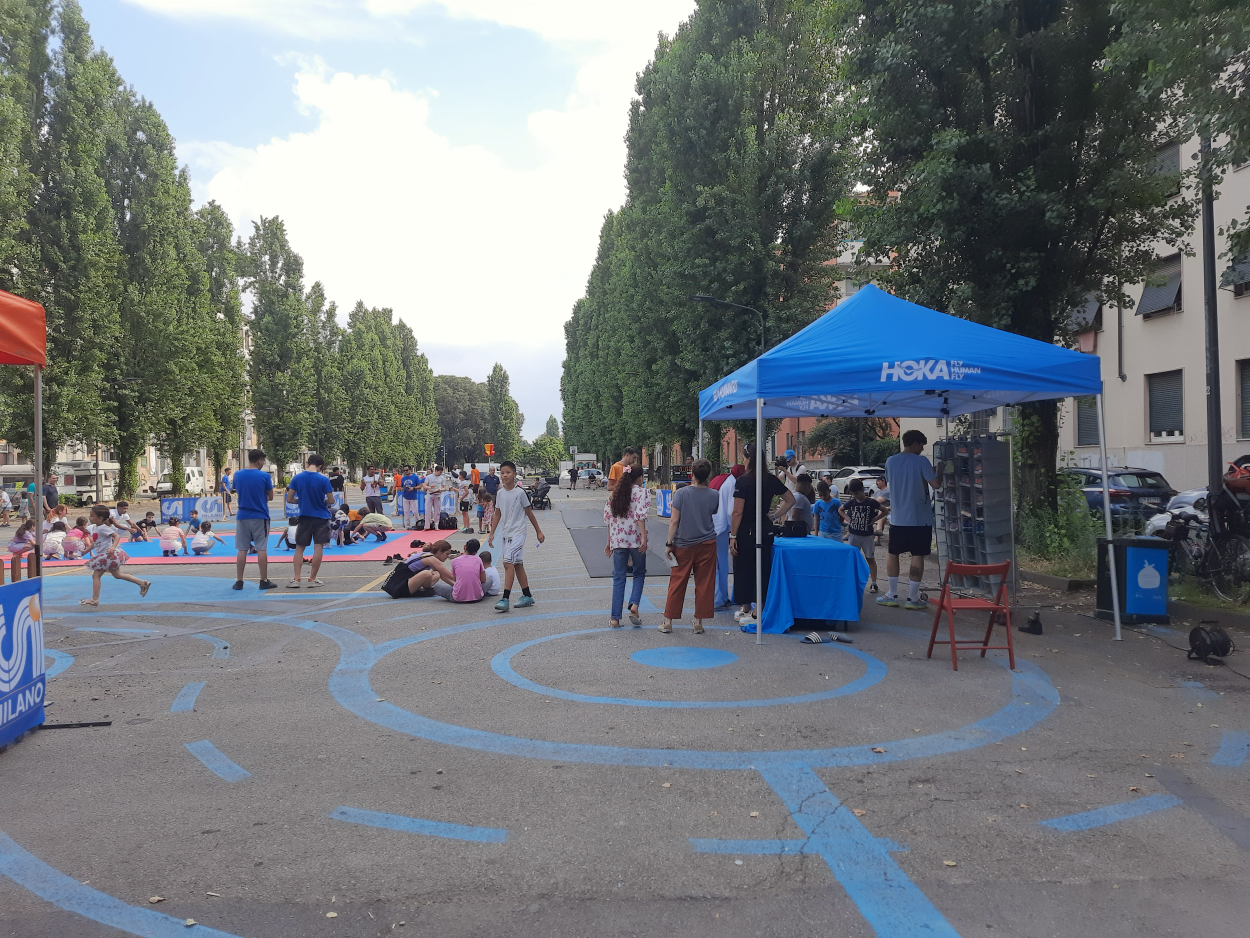
Lezha, Albania, transformed the Hydajet Lezha gymnasium into a youth center designed through close collaboration with teens. The center will host sport activities co defined by teens, ranging from basketball to dance, fostering a community where adolescents feel a sense of belonging and pride.
In Corfu, Greece, participatory design was tested in collaboration with local schools, integrating adolescents into the urban planning process. The ULG team has recently expanded to include five educational institutions—the 1st, 3rd, 4th, and 5th Gymnasium Schools of Corfu, as well as the 6th Elementary School of Corfu—highlighting the program’s commitment to engaging young voices. Additionally, a comprehensive 22-question survey is being conducted to gather valuable feedback on the needs and aspirations of adolescents. Co-created projects such as basketball courts, street football areas, and shaded gathering spaces aim to balance the island’s Mediterranean aesthetic with the functional needs of its youth. The design process also respects Corfu’s status as a UNESCO World Heritage Site, ensuring that the unique cultural and architectural heritage of the island is preserved while creating spaces that resonate with the community.Looking ahead, the program plans to further expand the ULG team by collaborating with additional schools and sports teams, broadening its reach and inclusivity. More meetings with ULG partners are being organized to deepen collaboration, refine the vision, and explore new roles and contributions for stakeholders in the project. These efforts will ensure a dynamic and participatory approach to the revitalization of Corfu’s urban spaces, making them more inclusive, sustainable, and reflective of the needs of the younger generation.
Vila do Conde, Portugal, is experimenting with intergenerational approaches to public space regeneration. In Bairro das Dálias, community dinners and workshops brought together youth and older residents, fostering dialogue and co-design for sports and social spaces. These efforts extend to peripheral neighborhoods where social housing and old fishermen coexist, as well as areas near schools across the city. The testing focused on methodologies to engage adolescents and connect them with the older community, giving new meaning to shared spaces. The social dinner was particularly successful, facilitating intergenerational dialogue and generating innovative solutions for regeneration based on sports and recreational activities. Attention to the environment and nature remains a central issue, which will be integrated into the various regeneration options.
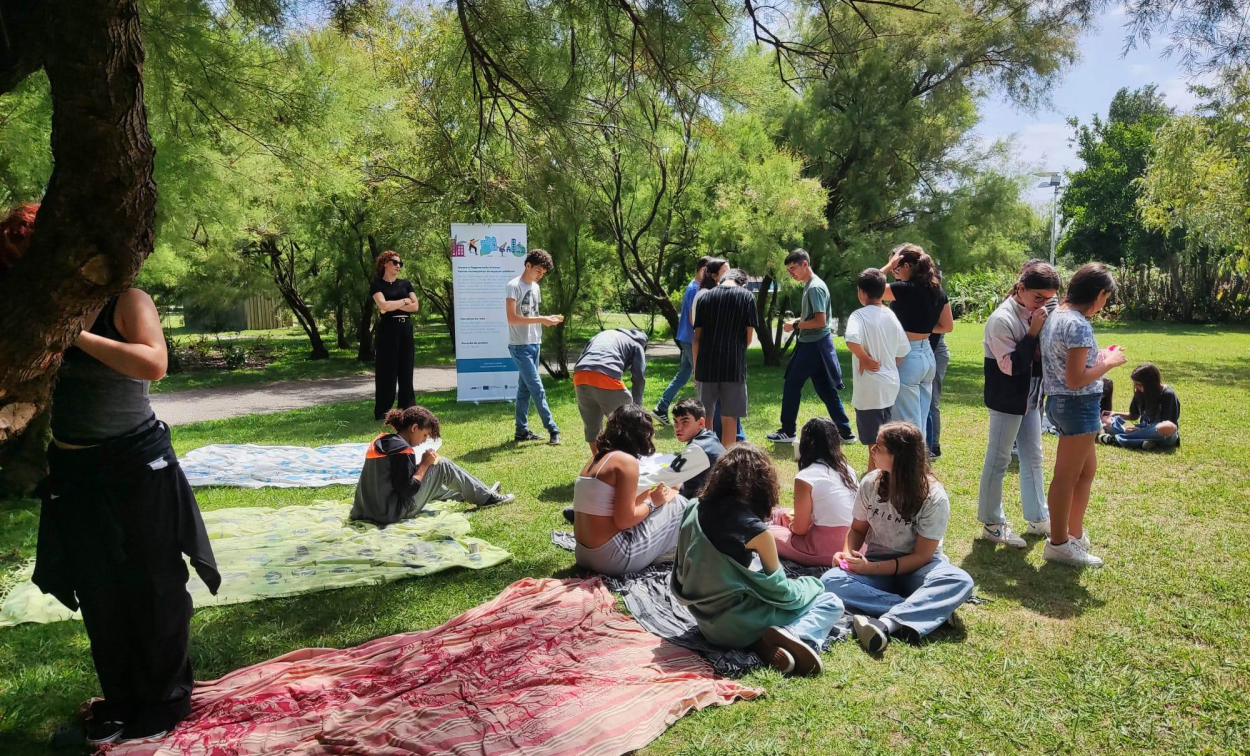
Why Sports Work
Sports offer a universal language that transcends barriers, making them a powerful tool for uniting communities. For adolescents, sports provide much more than physical activity; they offer a structured way to channel energy, foster teamwork, and build resilience. By participating in sports, young people develop essential life skills such as leadership, cooperation, and problem-solving. Sports also create a sense of belonging and identity, helping adolescents connect with their peers and their communities in meaningful ways.
Sports have the unique ability to activate public spaces, turning them into vibrant hubs of activity. They encourage social interaction, break down barriers between different groups, and promote inclusivity. Whether through organized events or spontaneous games, sports bring people together, transforming shared spaces into dynamic environments that reflect the diversity and vitality of urban life.
Beyond the Ball: Co-Design and Ownership

The true innovation in creating adolescent-friendly public spaces lies in the process of co-design. When young people are given the opportunity to shape their environments, they move beyond being passive users to becoming active stakeholders. This approach fosters a deep sense of ownership and pride, ensuring that the spaces reflect their needs, aspirations, and identities. Co-design empowers adolescents, providing them with a platform to express their creativity, make decisions, and see their ideas come to life. This not only improves the quality and relevance of public spaces but also builds a stronger connection between youth and their communities.
The act of involving adolescents in planning and decision-making has ripple effects beyond the physical transformation of spaces. It strengthens civic engagement, encourages collaboration across generations, and helps to instill values of inclusivity and respect for diverse perspectives. In these shared spaces, young people learn to navigate challenges, negotiate differences, and contribute meaningfully to their urban environment.
The Road Ahead
As cities continue to evolve, the focus on creating public spaces that cater to adolescents is not just a trend but a necessity. These spaces are vital for fostering social cohesion, promoting health and well-being, and building resilient communities. However, the journey is far from over.
One of the key challenges ahead is ensuring that public spaces are truly inclusive. This involves addressing the unique needs of girls, marginalized youth, and other underrepresented groups to ensure they feel safe and welcome. Another pressing issue is the need for more flexible engagement strategies, particularly when traditional partners like schools face logistical hurdles. Expanding partnerships with community organizations, leveraging digital platforms, and exploring innovative outreach methods will be essential.
Environmental sustainability also remains a critical consideration. As cities work to integrate natural elements into urban design, public spaces can play a pivotal role in promoting environmental stewardship among youth.
The future of urban spaces depends on continuous innovation, collaboration, and a commitment to putting young people at the center of the conversation. By investing in adolescent-friendly spaces today, cities are laying the groundwork for a more inclusive, dynamic, and resilient urban landscape for generations to come.

